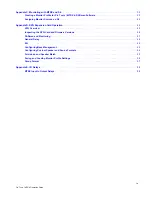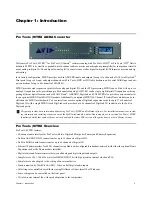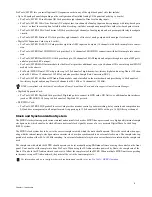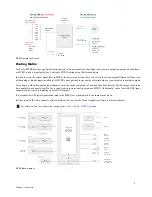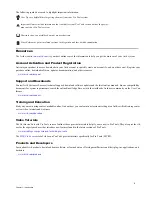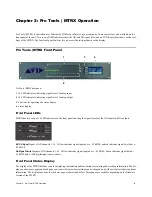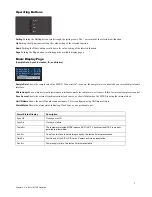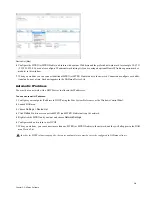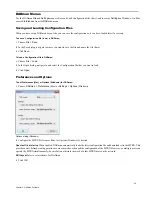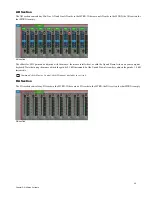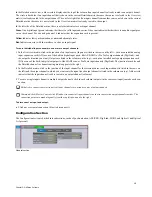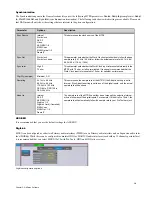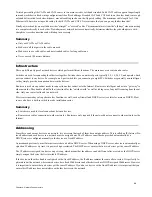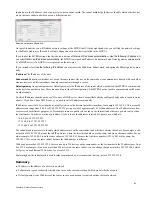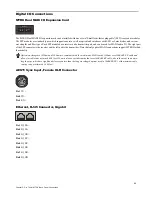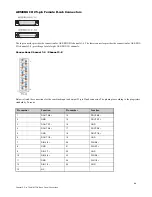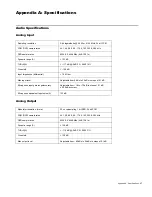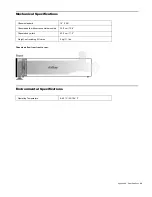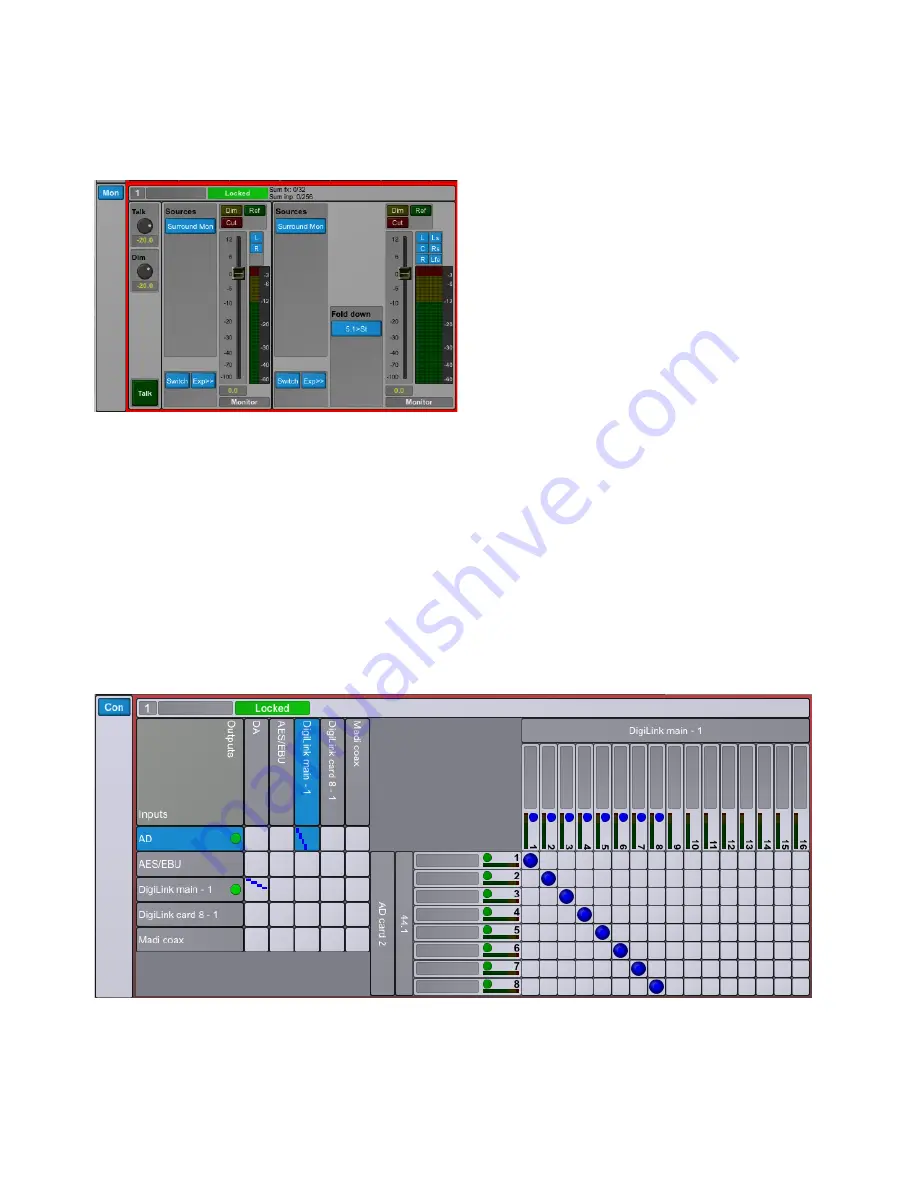
Chapter 3: DADman Software
14
Monitoring Section
The Monitor (Mon) section is available when the
Enable monitor
option is selected in the Monitor Profile Configuration Settings win-
dow (
Settings > Monitor Profile
). This lets you monitor defined sources and route them to defined outputs (configured in the Monitor
Profile Configuration Settings window). The Mon section also provides controls for Talkback parameters. If an optional SPQ card is in-
stalled, EQ Filter options and signal delay amounts become available (Appendix D, “SPQ Expansion Card Operation”).
Connections Section
The Connections section provides a cross-point matrix for configuring the routing of all available analog and digital inputs and outputs
for each unit in on the network. In addition to the built-in digital I/O and DigiLink connections to and from Pro Tools, all I/O expansion
cards installed in the unit are also shown here. You can route any input channel (mono) to one or more output channels within the same
unit. All routing configurations are internal to each individual unit, so you cannot route the inputs from one MTRX unit to the outputs
of a second MTRX unit on the network.
The Connections section includes of an Overview matrix on the left and a Detailed matrix to the right, which appears when you select
a cross point between an Input Source and an Output Destination in the Overview matrix.
The left side of the Overview matrix shows all available inputs (sources) for the unit. Available outputs are displayed vertically across
the top of the Overview matrix. For example, the picture below shows the cross-point matrix for an installed 8-channel analog to digital
expansion card (AD on the left) where each input channel is routed to Pro Tools input channels 1–8 (DigiLink main – 1 on top).
Mon section
Connections section: DADman Matrix

